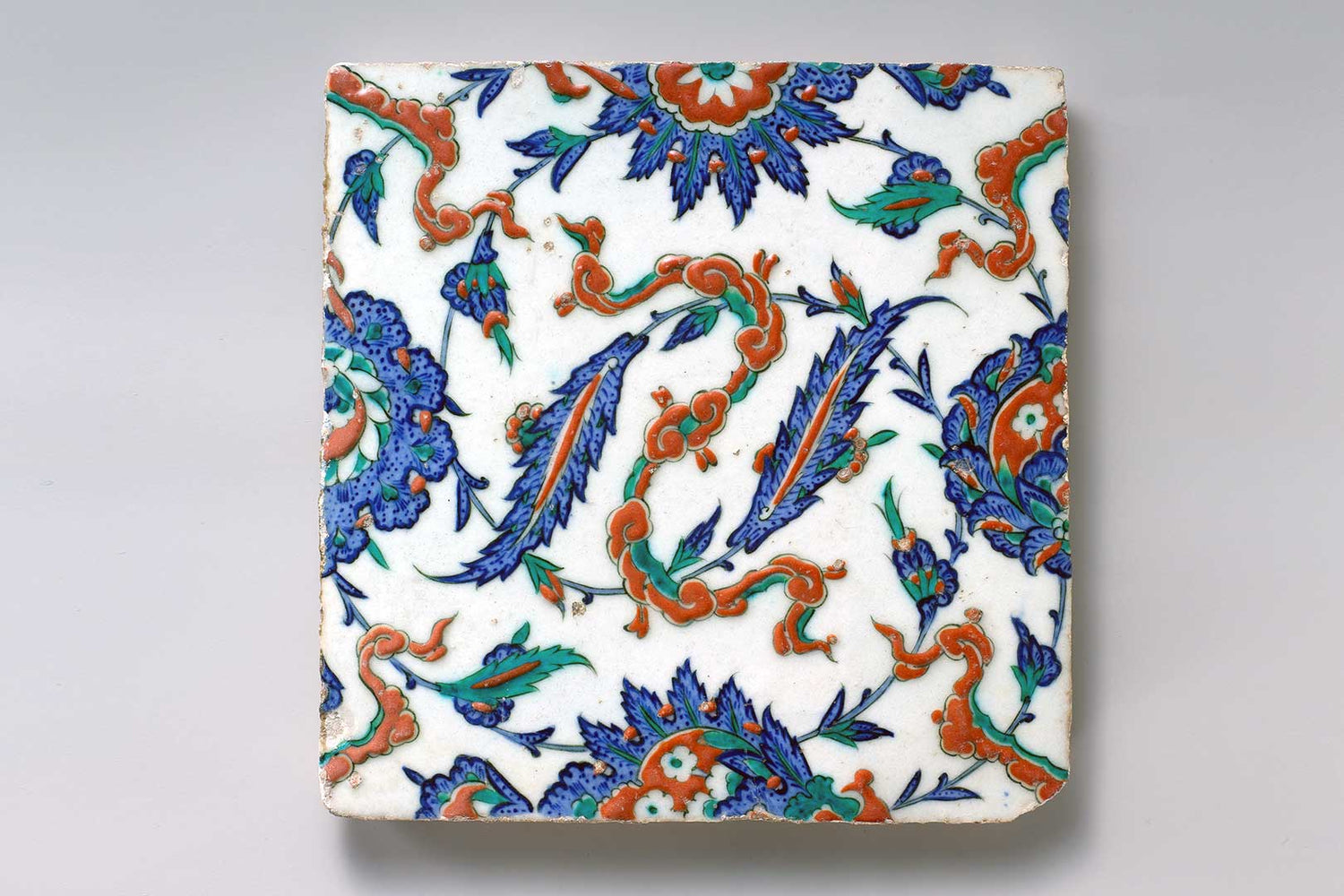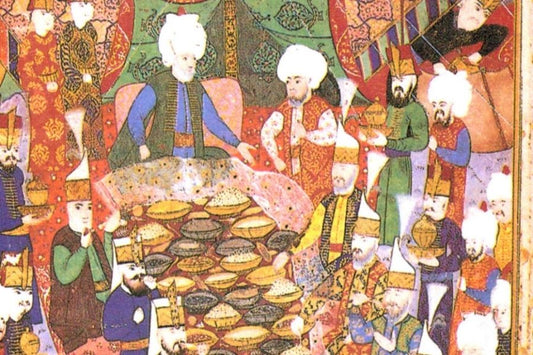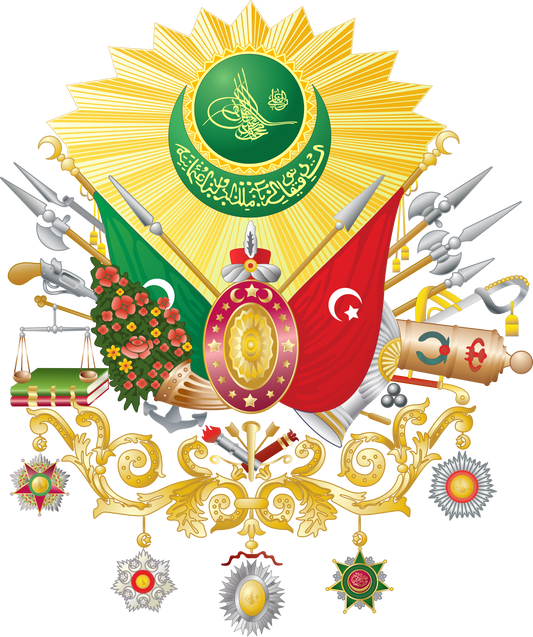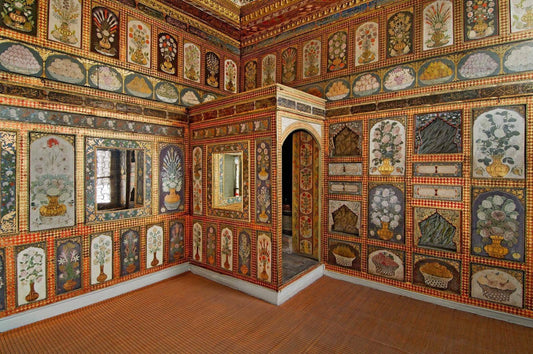The known place of Suleiman the Magnificent in the universe is indicated in an inscription on the gate of Bender Castle in 1538. It states that Suleiman, the servant of God and sultan of this universe, was the head of the Islamic community, and that he was given sermons in Mecca and Medina. He also ruled as a shah in Baghdad, as an emperor in Byzantium, and as a sultan in Egypt, sending his fleets to the waters of Europe, the Maghreb, and India.
The sultan's dual role, religious and secular, mentioned in this inscription, took material form in religious architecture, and the middle period of his reign, from the mid-1530s to the late 1550s, saw Sultan Suleiman's unprecedented activity in the construction and repair of religious monuments and endowments for the welfare of his subjects. In his role as protector of the holy places, he tended to the Cross and the works in Damascus, one of the most important stops on the Way of the Cross. In Baghdad, he repaired and tiled the tomb of Abu Hanifa. He paid particular attention to the holy city of Jerusalem, and the population within its rebuilt city walls tripled during his reign.
On the other hand, the works he commissioned in Istanbul and Anatolia were often designed in memory of members of his own family. He commissioned a mosque in the name of his father, Sultan Selim, and a double bathhouse in the mosque in Manisa in memory of his mother. The second major religious structure he commissioned after these was the mosque and mausoleum he commissioned in memory of his son, Prince Mehmed. The striking similarity between the Tomb of Sultan Selim and the Tomb of Prince Mehmed, both in terms of plan and decoration, demonstrates the architectural continuity that has been maintained despite the lapse of more than twenty years.
Prince Mehmed was the eldest son of Suleiman the Magnificent by his haseki Hürrem Sultan, and during the latter half of his reign, most of the orders for religious architecture under the patronage of the palace came from Hürrem Sultan, her daughter Mihrimah Sultan, and the vizier Rüstem Pasha, whom Mihrimah married in 1539. All of them had significant building activities during the 1540s and 1550s, with Mihrimah Sultan's involvement continuing until the mid-1560s. This group's influence began with Hürrem Sultan. In 1538-39, Hürrem Sultan commissioned a mosque in Istanbul, and a year later, she added a madrasa and a school, transforming it into a complex.
In 1298, the chief architect, Acem Ali, died. He was succeeded by Mimar Sinan, who would dominate Ottoman architecture for the next half century. The Haseki Hürrem Sultan Mosque is Sinan's first large domed structure. This was followed by the Mihrimah Sultan Mosque and the mosque commissioned by Suleiman the Magnificent in memory of his brother, Prince Mehmed.
Thus, the late 1530s and 1540s witnessed three significant developments. One of these was the commitment to the revival of religious architectural patronage by Suleiman the Magnificent. The increasing involvement of those around Hürrem Sultan in monumental building projects was also parallel. Finally, Sinan effectively prepared himself for the construction of the Süleymaniye Mosque in Istanbul in the 1550s, sharpening his architectural and administrative skills during this period. The Ottoman ceramic industry was not immediately affected by these developments. Initially, Sinan continued the colored glaze technique, the tile tradition favored by his predecessor, Acem Ali. However, the 1550s witnessed changes not only in tile aesthetics but also in the structure of the ceramic industry as a whole. These were the most significant changes since the adoption of frit ceramics.
Although Suleiman the Magnificent established the conditions and capital for the changes in the tile industry in the 1550s, the decision-makers behind them remain unclear. Sinan can be credited with bringing together the diverse aspects of structure and decoration into an aesthetic whole. Since İznik tile makers, like ceramic masters, were under the command of the chief palace architect in 1640, he may have directly overseen the management of the ceramic industry. However, the exact date of this administrative system is unknown, but the period between 1550 and 1585, during Sinan's tenure as chief palace architect, marked the heyday of İznik tile production.
The introduction of red into the tile color palette was both a technical triumph and a decisive factor in the new aesthetic vision that would dominate Iznik ceramics. Red is one of the most difficult underglaze colors to control in ceramics. Unlike other colors, it cannot be applied as a thin solution. Therefore, it was applied as a thick, raised slip. A similar slip was used in Raqqa pottery in Syria during the Ayyubid period and persisted, rarely, in Mamluk underglaze tiles and ceramics. The last time the raised underglaze red appears is on a tile attributed to Seyfeddin Bayezid al-Zahiri and dated to the second quarter of the 15th century ('Iznik', Nurhan Atasoy and Julian Raby, pp. 218-221).




